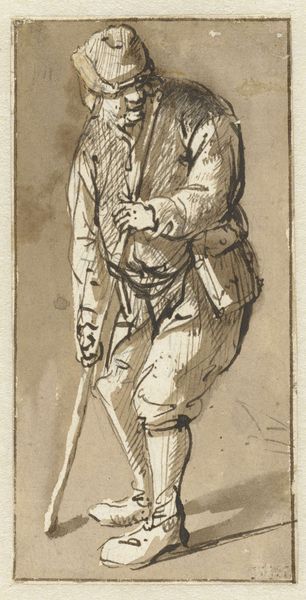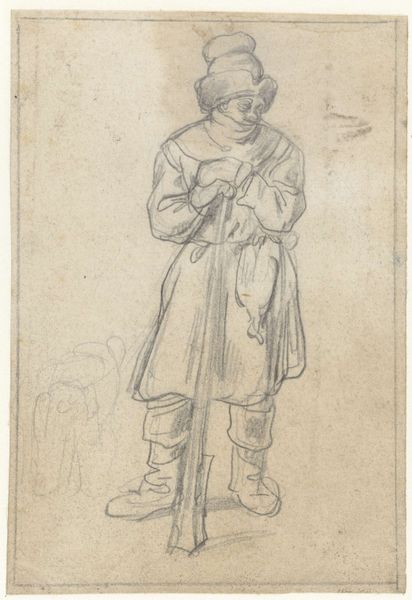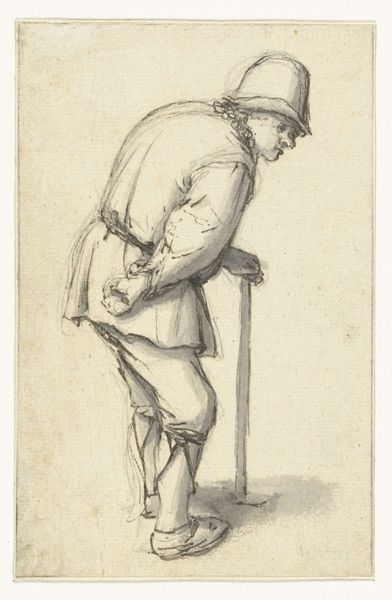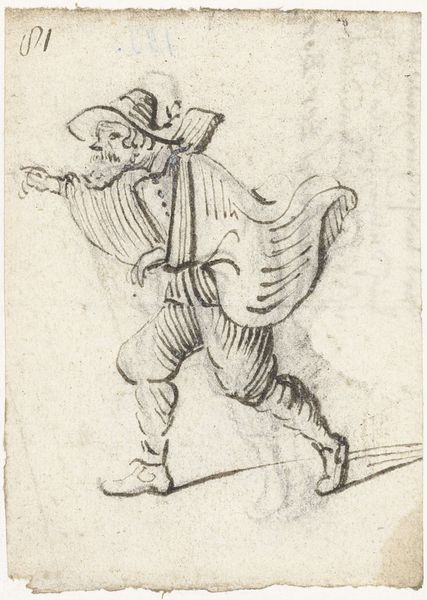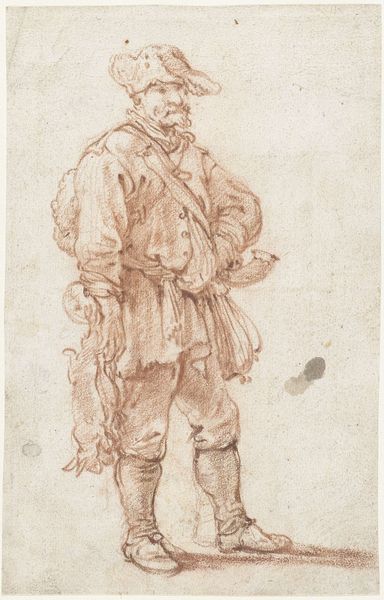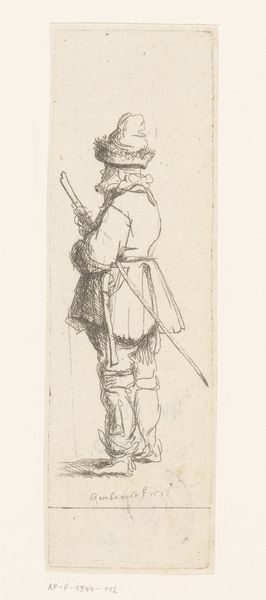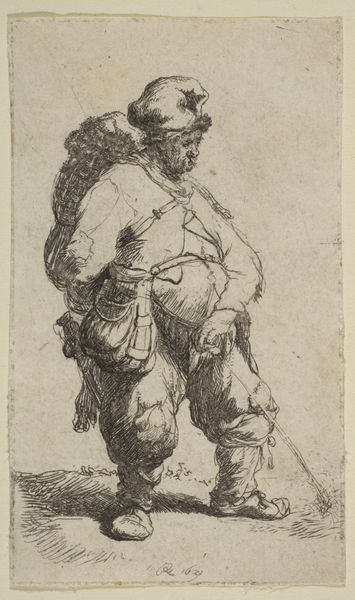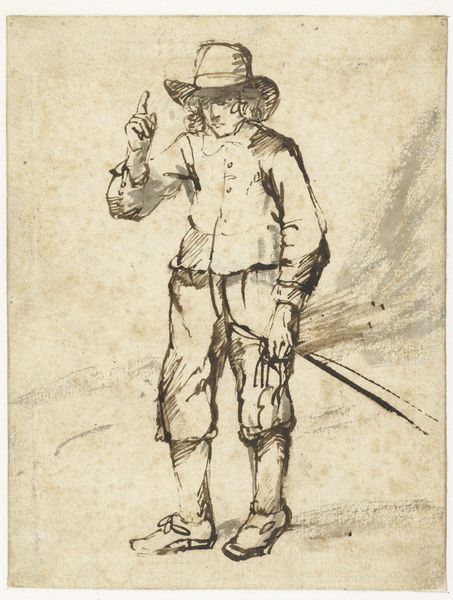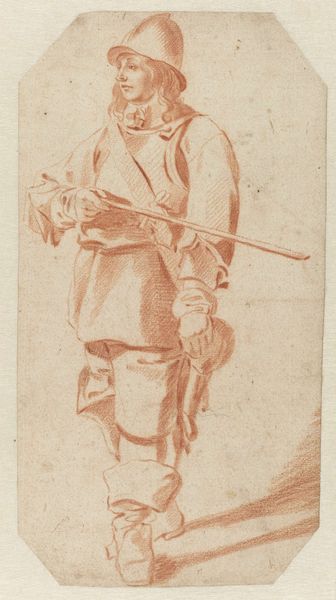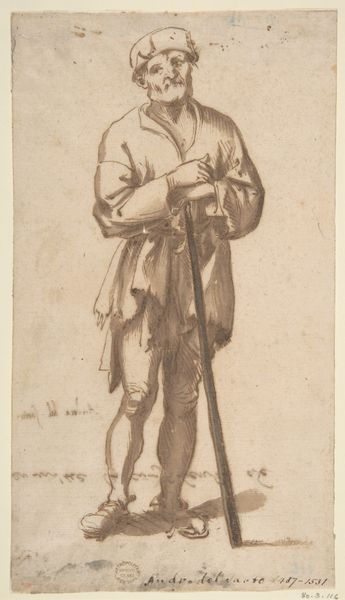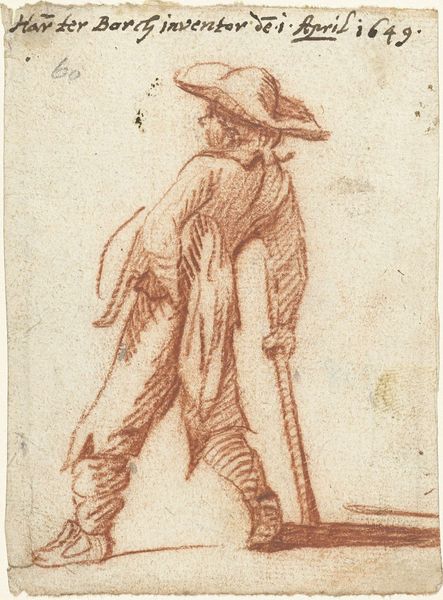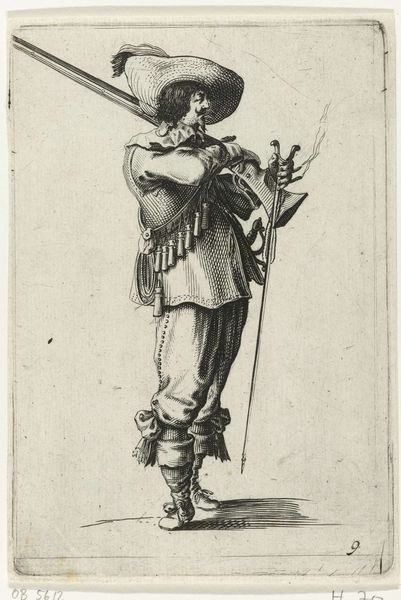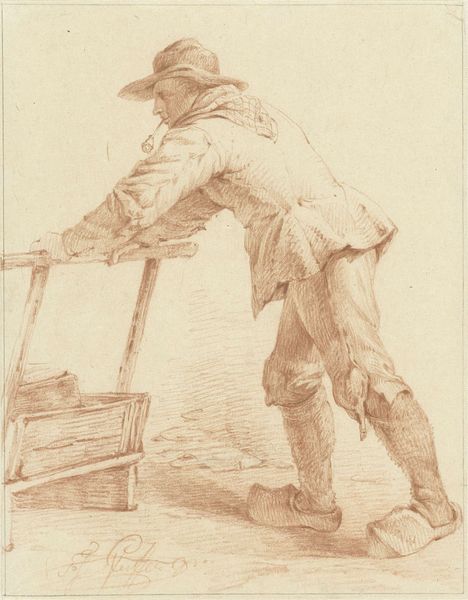
drawing, ink, pen
#
portrait
#
drawing
#
dutch-golden-age
#
pencil sketch
#
figuration
#
ink
#
pen-ink sketch
#
sketchbook drawing
#
pen
#
genre-painting
Dimensions: height 272 mm, width 175 mm
Copyright: Rijks Museum: Open Domain
Curator: Before us we have “Seated Violin Player,” a drawing created between 1620 and 1624 by Willem Pietersz. Buytewech. It is rendered in pen and ink. Editor: My first thought? It's giving off definite casual Friday vibes, only 17th-century style. Like, this dude's just chilling, violin in hand, ready to jam out after a long week of… well, whatever folks did back then. Curator: More accurately, I see Buytewech providing us with a glimpse into the performative aspects of identity and class during the Dutch Golden Age. Note how the clothing signals a certain socio-economic status, yet the scene is intimate, not overtly formal. How do we reconcile this? Editor: Ah, you’re pulling on my philosophical thread there! Maybe it’s a commentary on the artist's own aspirations or perhaps, his observations of the societal tensions bubbling just under the surface? The looseness of the drawing almost undermines the seriousness of his outfit, as if to whisper, "Don't take yourself too seriously." Curator: That informality is compelling, especially if considered against the backdrop of the era’s rigid social hierarchies. I’m curious about the subtext—does this depiction normalize musical expression for a wider audience or does it implicitly reinforce class boundaries by showcasing leisure accessible only to some? Editor: Or, OR, hear me out... maybe the guy just loved to play the violin and Buytewech thought, "Hey, that’s a nice scene!" The artist may have wanted to portray someone happy, and he happened to have fancy pants while playing the violin! Let’s not ignore the joy of making art simply because art can, and often does, carry social messages. Curator: Fair point. The figure’s enjoyment might indeed be the primary narrative. However, in exploring these layers, we consider how individual stories become intertwined with collective histories. Art allows for that constant negotiation between personal narrative and the social, political spheres, inviting new meanings for varied audiences across time. Editor: Okay, I’ll grant you that. Art’s this wonderfully complex dance of personal expression and social commentary. And I love the way the simple pen and ink, used in this intimate drawing, captures a moment in time so effectively, so imperfectly, yet resonantly. Curator: Indeed. Reflecting on Buytewech's work, I see an open invitation. It asks us not only to observe but to interpret, to situate, and to continuously question the narratives we construct around both art and society.
Comments
No comments
Be the first to comment and join the conversation on the ultimate creative platform.
